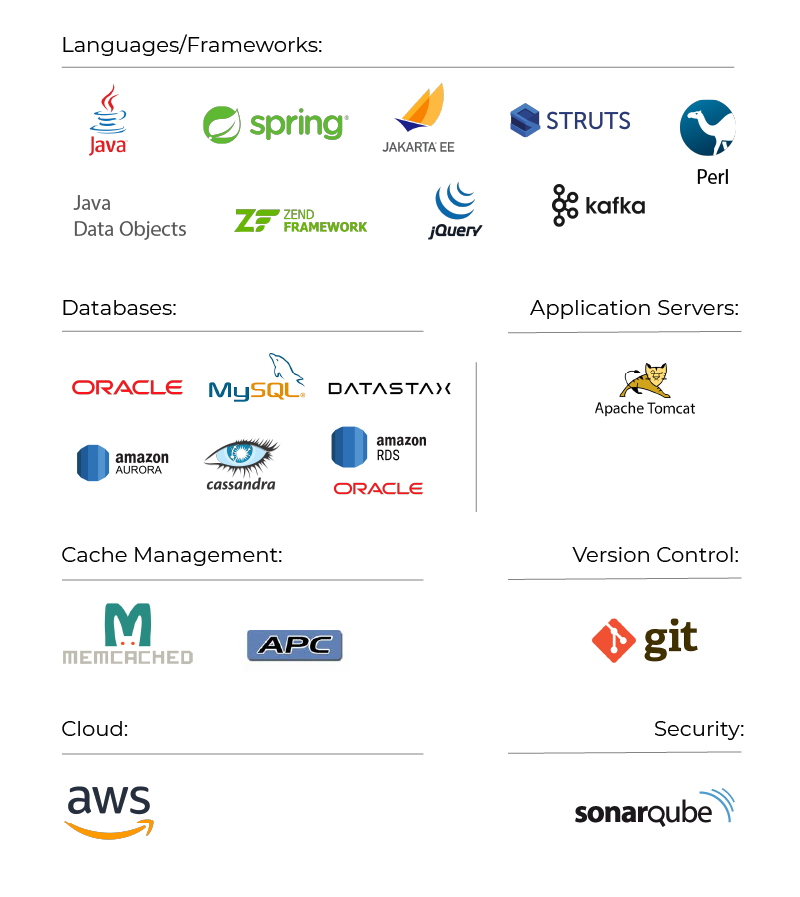The client is a global commerce company specializing in e-commerce, payments, and marketing services for the international markets.
The company strives to simplify global sales through tax, fraud, compliance, and logistics management.


The client is a global commerce company specializing in e-commerce, payments, and marketing services for the international markets.
The company strives to simplify global sales through tax, fraud, compliance, and logistics management.
Monolithic legacy architecture limited the client's growth and presented a significant obstacle to its goal of digitally transforming its technology ecosystem into a modular, agile, and scalable system that is crucial for improving operational agility, scalability, and efficiency.
Suffering from low CI/CD maturity, the client relied heavily on tedious and time-consuming manual testing, leading to a high technical debt that slowed the releases and affected the software quality. The client sought a long-term solution for this issue.
Based on our technical expertise, we recommended the client migrate its application and the entire legacy infrastructure to a cloud-native, microservices-based environment on AWS to improve the reliability and future readiness of the architecture.
We proposed containerizing the applications using AWS Fargate and Kubernetes to make them easily deployable across environments, promoting a consistent user experience while optimizing resource utilization and scalability according to business demands.
As the client's preferred partners, we spearheaded this digital transformation with a large-scale cloud migration and application modernization, laying the foundation for sustained innovation and long-term business growth.
We initiated the client’s digital transformation journey by implementing a completely scalable, cloud-native solution with modern architecture, automation, and data-driven intelligence as its foundational elements.
By following a micro-feature approach to transition the client's existing system to a modern microservices-based architecture, we were able to promote superior agility and maintainability.
As the client struggled with limited real-time insights and scalability, we adopted Big Data and Data Lake solutions to enable long-term growth and future-ready operations.
Our team built a robust, centralized processing and analytics environment powered by Cassandra, DataStax Astra, Kafka, and Datalake, enabling scalable and real-time analytics.
We upgraded the infrastructure, empowered the client with serverless computing abilities, and facilitated a seamless migration to the AWS cloud by adopting RDS, Lambda, and Fargate.
The messaging layer, modernized with ActiveMQ, promoted real-time communication and enabled data streaming by adopting Apache Kafka for high throughput and low-latency processing.
To address the challenges and give the client a competitive edge, we also focused on automating QA processes, reducing time-to-market, and offering a more unified user experience.
We accelerated the software delivery with an integrated CI/CD pipeline that featured automated auditing and robust quality controls. This streamlined the client’s releases and improved the code quality, ultimately resulting in reduced time-to-market.
With these measures, we enhanced the client’s operational efficiency and regulatory compliance.
We utilized open-source technologies to optimize the operational costs and cloud infrastructure through automated resource management.
The newly adopted microservices architecture, combined with modern CI/CD pipelines and test automation, optimized the release cycle from 4 weeks to 1 week. This encouraged rapid independent deployments and quicker time-to-market.
Automation was another central focus area; we automated over 95% of testing, resulting in superior software quality, accelerated releases, and minimal manual effort.
To ensure a consistent user experience and reliability, we improved application stability to 99%, making it virtually crash-free with an uptime of 99.9% with proactive monitoring.
Furthermore, we improved the Mean Time to Recovery (MTTR) with 24/7 performance monitoring. This was complemented by real-time observability, proactive issue detection, and resolution with data-driven decision-making.
As part of a strategically planned transformation initiative, we enabled the client to modernize its legacy infrastructure and successfully migrate to a robust AWS cloud environment. Here are the key milestones we achieved during this journey:
The fully adaptable, white-label platform delivered to the client not only addressed the client’s problems but also supported future enhancements seamlessly.
By continuously evolving the CI/CD process and automation, we ensured that the architecture remained resilient and avoided failures across the deployment pipeline.
With a cloud-agnostic infrastructure, we provided complete flexibility to process the ever-increasing data volumes and velocity, reducing over-reliance on a single cloud service provider.
Our AQ automation framework could handle the evolving business needs efficiently.



